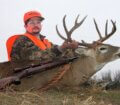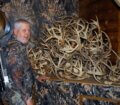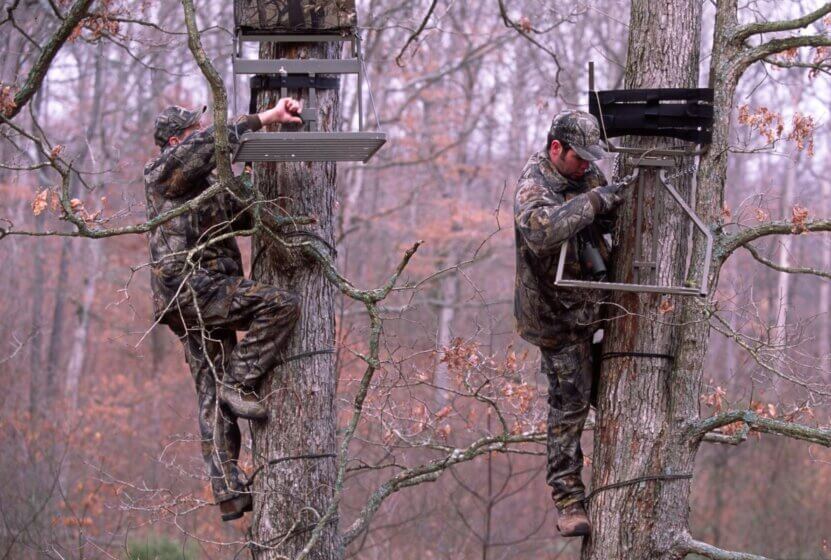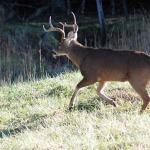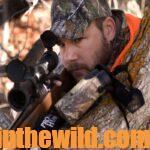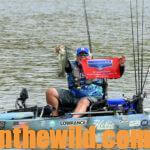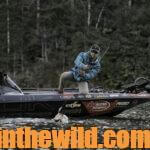Editor’s Note: Ronnie Groom of Panama City, Florida, the longtime owner for 60 years of C&G Sporting Goods, has been one of the foremost deer hunters of our day for the past half century. Groom, a well-rounded deer hunter, participates in bowhunting, primitive-weapon hunting and gun hunting. Groom hunts deer in several states – on public and private lands – where the hunting pressure is both heavy and light.
So far, we’ve learned why deer are nocturnal, and where deer aren’t nocturnal. We’ve looked at how to hunt deer in the mornings, the evenings and the middles of the day, but we haven’t actually discussed the hunting techniques that hunters who want to take these phantom deer must employ. As mentioned earlier, being conscious of the wind direction is the most-critical ingredient to take a nocturnal buck. This rule absolutely cannot be broken. Don’t hunt a region where you believe a phantom buck is hiding, if the wind is not in your face. Also, be aware of your odor, and wear scent-killing products like Scent-A-Way and Nose Jammer, as well as take Scent-A-Way spray with you to spray while you’re in your tree stand. Wash your clothes in scent-free products too.
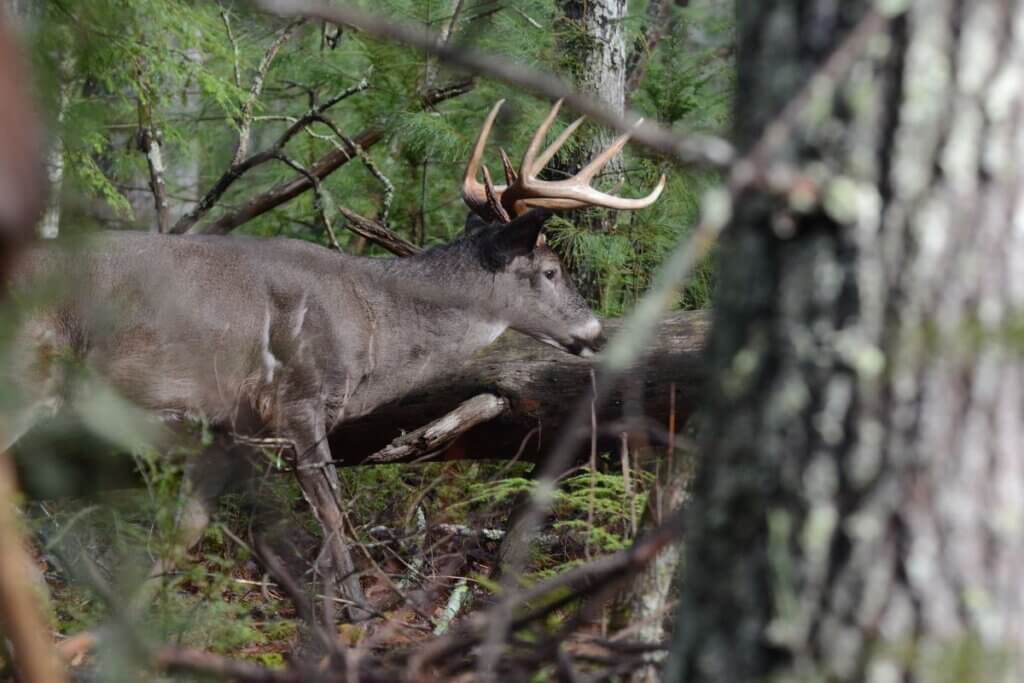
Another factor that most sportsmen don’t consider when they’re hunting nocturnal bucks is when the hunt actually begins. Keep in mind that hunting nocturnal deer involves attempting to bag one of the smartest deer in all of the woods. Since this buck has learned how to dodge the hunters in the woods, he is much smarter than the bucks that die early in the season. To harvest this kind of buck, you must start to hunt when you leave your vehicle and enter the woods. You can’t slam doors, cough, spit or talk. You must be as quiet as if you think the buck is watching you the entire time. I also like to wear camo face paint, even when I’m wearing a camouflaged hood.
Also make the approach to your hunting site slow and deliberate. In your preparation to hunt this particular deer, besides already pre-determining your stand site, you should know the route you’ll take to that stand. Already have the brush cleared-out along that path ahead of time. Use beforehand implements like hand saws and pruning shears. Then when you stalk to the stand, full camouflaged, your clothes won’t brush up against the foliage and make noise. And, wear soft clothing so that you can move silently. Allow yourself 30-additional minutes than what you estimate will be required to reach the stand. Then you will know that you can approach the stand slowly, quietly and deliberately with plenty of time to spare.
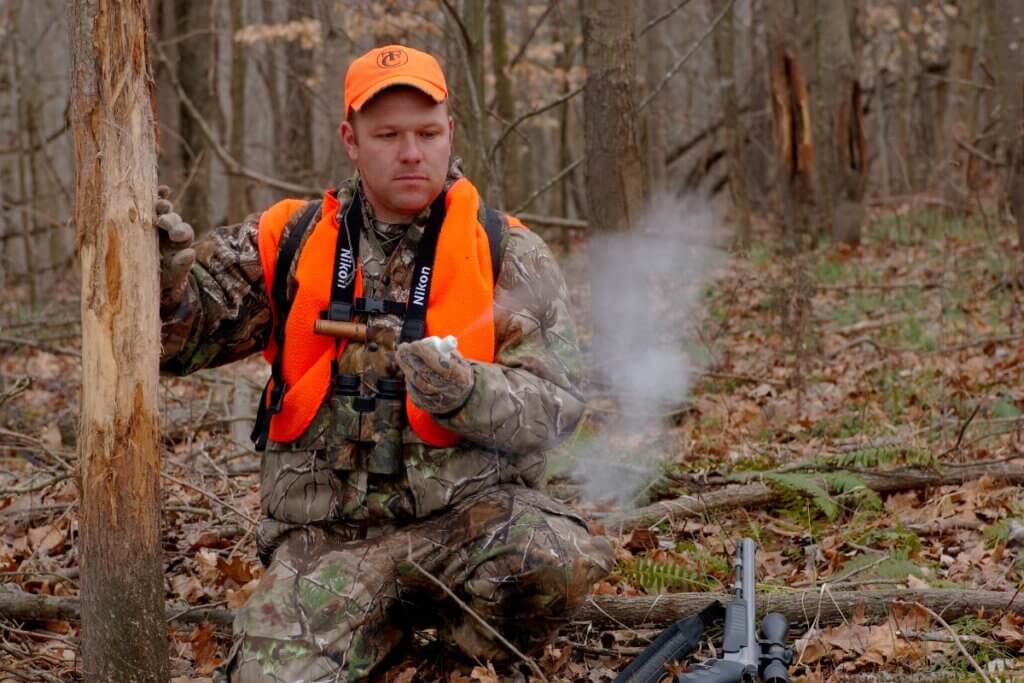
Too, at your stand site, the leaves and limbs should be cleared away ahead of time. Then when you sit on the ground, you won’t make any noise. If you’re using a tree stand, either put the tree stand up early in the season or know that you’ll be able to set-up that tree stand silently. Once you climb into your stand before daylight, begin to hunt with your ears, before you hunt with your eyes. Many times, if deer are feeding on acorns, you can hear them popping the nuts before you can see them. If they are traveling through water, you can hear them sloshing. Or, if they are walking through leaves, you can hear them move too. Often you will be able to pinpoint exactly where the deer are, before you even have enough light by which to shoot.
Once you bag your buck and fill your tag for the season, the hunt for next year’s buck starts. Go back into the woods without a gun during hunting season when the hunting pressure is high to locate areas that the nocturnal bucks will go to while they are still utilizing these regions. Many times, you will run the bucks out of their sanctuaries as you move in to look for them. But since you’ve already filled your tag, and you’re not going to be able to shoot any more in that region that season, whether or not you spook the bucks doesn’t really matter. Put those coordinates where you find sanctuaries and bucks in your hand-held GPS or in the GPS on your phone or in your hunting app on your phone, like onX and HuntStand.
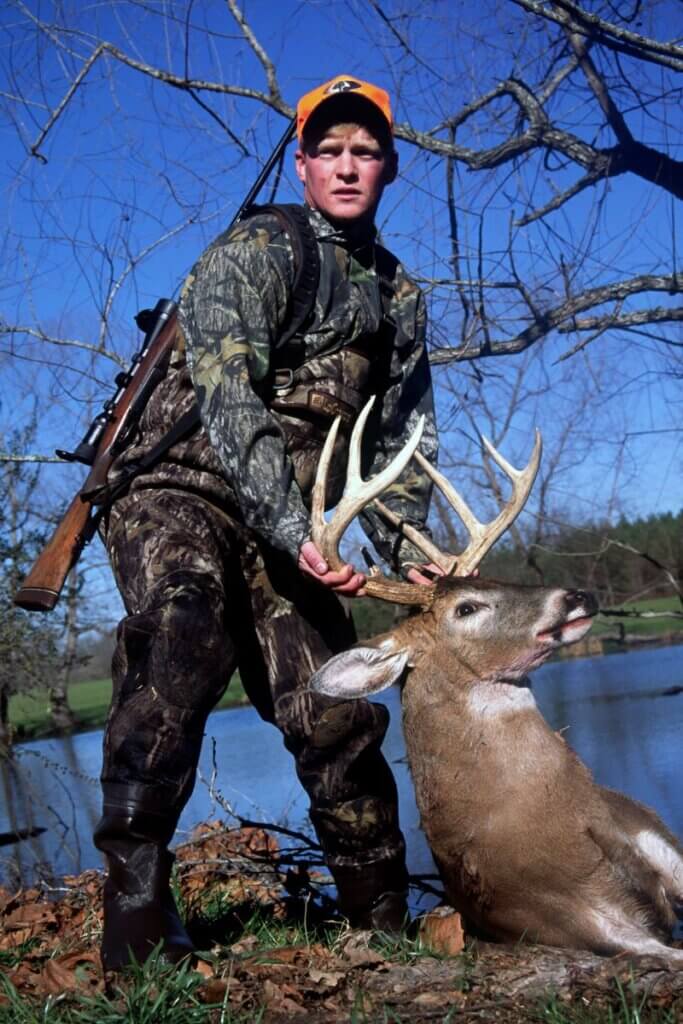
Most hunters stop hunting when they fill their tags. Therefore, they learn very little about what the deer are doing when the hunting pressure is high after their hunts are over. But if you begin your hunt for next season after you’ve completed your hunt for this season, you’ll be much more likely to find and take big bucks next year.
Hunting is the sport. Bagging a deer is the fulfillment of that sport. I spend many hours after I fill my tag hunting for a place to hunt the following season. Then when I learn that the bucks are becoming nocturnal in certain areas, I know where they must be holed-up. Prior to the opening of the season, I can move into these sanctuary areas I have located at the end of the previous year’s hunting season, set-up stand sites, cut shooting lanes and prepare for a successful hunting season. Then when hunting season arrives, the hunting pressure is high, and the bucks become nocturnal, I’ll be waiting on them.
Affiliate Disclosure: JohnInTheWild.com is reader-supported. If you purchase anything we mention using our referral links, we may get a small commission. However, there’s no extra cost to you. Thanks for supporting John E. Phillips’ Outdoor Journals!

How to Hunt and Take Big Buck Deer on Small Properties
In this book, you’ll hear from 14 hunters who either have gained permission or leased properties as small as six acres to as much as 250 acres, and how they consistently take older-age-class bucks off these little lands.
VERSIONS: AUDIBLE, KINDLE & PRINT

Jim Crumley’s Secrets of Bowhunting Deer
Using a black magic marker and a gray work jumpsuit, Jim Crumley of Buchanan, Virginia, drastically changed the nature and purpose of hunting camouflage when he created the first sportsman’s camouflage – Trebark. Crumley’s love of bowhunting and his desire to be more invisible changed hunting clothing forever.
In this hunting guide, he shares the wisdom that he’s learned throughout his lifetime about how to be a hunter, how to find a deer lease, how to scout for deer, and more.
Special features include how to:
- Have a magic 60 acres to hunt
- Decide the best equipment to use
- Find deer year-round
- Locate land to hunt
- Know the best place to put your tree stand
- Get bucks within bow range
VERSIONS: AUDIBLE, KINDLE & PRINT

How to Hunt Deer Like a Pro
How do you know if the land you hunt has a trophy deer on it? Wildlife manager Bob Zaiglin, of Uvalde, Texas and Jim Crumley, the father of modern-day hunting camouflage, tells you how to find out. GPS can make finding and taking that trophy buck easier. This hunting guide will teach you how to hunt big bucks where no one else can find them, how to call deer, and how to become versatile as a deer hunter, so that if one deer tactic doesn’t work, another one will.
In the chapter, “How to find Bucks at Scrape,” Dr. Keith Causey, retired professor of Wildlife Science at Auburn University, describes the best way to hunt a scrape.
Brad Harrison of Neosho, Missouri, is a nationally-known videographer, professional deer hunter and master at calling deer. Another master is Will Primos of Primos Game Calls. These two experts will tell the best deer calls and when to use them in this book.
And for over 20 years, Bo Pitman, lodge manager of White Oak Plantation, has been studying deer movement patterns. He explains what types of conditions are best for predicting deer movement.
VERSIONS: AUDIBLE, KINDLE & PRINT

Deer hunting and deer hunters are drastically changing each year. To learn new techniques for hunting deer and have more places to hunt, I’ve interviewed some of the best deer hunters in the nation and share their tactics in How to Hunt Deer Like a Pro: Volume II.
In Chapter 10, Jacob Lamar tells you his tactics for consistently taking older-age-class bucks on public lands in several states. Chapter 11, Bob Walker explains how to find places on public lands where you can hunt that 99 percent of the other hunters never have considered hunting. The Bonus Chapter with David Ramey tells you how, where, when and with what equipment to take big Kansas bucks on public lands by hunting in 100-degree weather when others won’t hunt.
Chapter 13, Mark Drury, his family and his guests take mature bucks every season by having more small places to hunt rather than one large property. Drury explains the strategy of having satellite farms to hunt that only may be 50-150 acres each or less. Chapter 15, Pat Reeve, who hunts far-northern states and Canada, says, “I don’t like hunting for mature bucks until the weather is 20 degrees or less.” Chapter 4, Dr. Larry Marchinton says that funnels are the most-reliable stand sites to hunt for big bucks and tells why.
VERSIONS: AUDIBLE & PRINT
When you use the links below to go to Amazon, notice on the left of the Audible option where Amazon says you can hear a sample that gives you 10% of these books for free! On the right side of the page for each book and below the offer for a free Audible trial, you can choose to Buy the Audible book.
Be sure to also check out John’s Free Books as our gift to you!
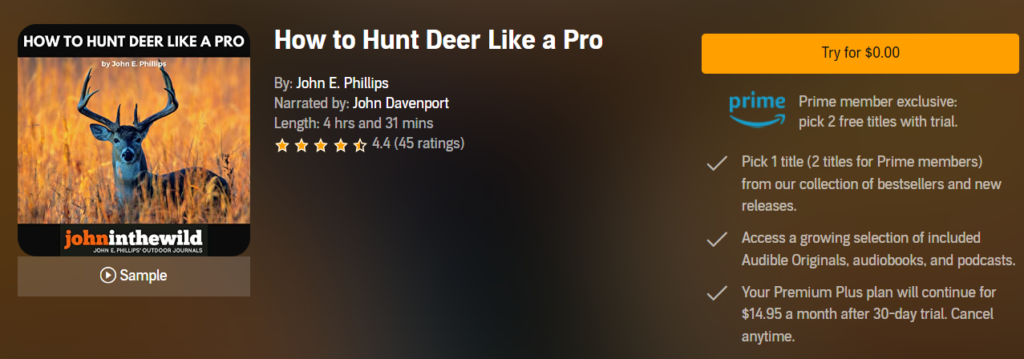
Prime Members: You’re eligible to claim 2 free titles with your 30-day Audible Premium Plus trial! Browse more than 100 of John E. Phillips’ expert guidebooks on hunting and fishing here.
Books By Topic
Category Shortcuts: View on Amazon
| Deer Hunting | Turkey Hunting | Elk Hunting | Bass Fishing |
| Mule Deer Hunting | Bowhunting | Bowfishing | Crappie Fishing |
| All Cookbooks | Hunting Cookbooks | Fishing Cookbooks | All Audible Books |

